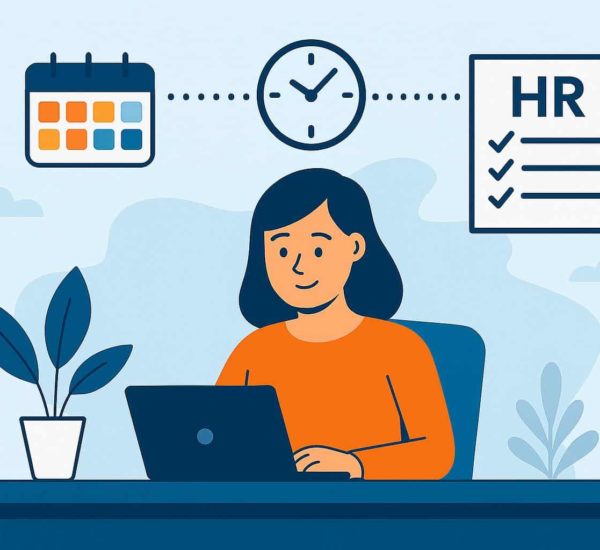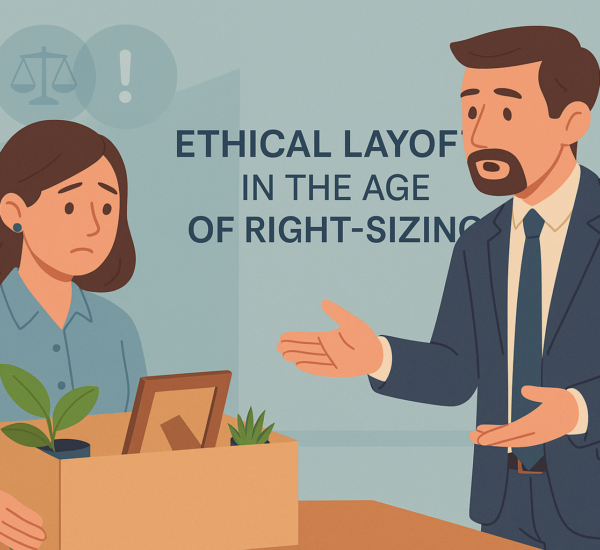The mark of developed nations is a robust social security cover for employees. The CA SDI is one such state disability insurance program for Californian employees to get weekly tax-free disability benefits for up to one year.
In this article, we’ll take you through the definition of CA SI, who pays for it, the eligibility criteria, and if employers are allowed to opt-out.
What is CA SDI?
CA SDI or the California State Disability Insurance program provides benefits in case of temporary disability to eligible employees. Employees who cannot work due to a short-term illness or injury can take advantage of CA SDI. The California SDI provides wage replacement to the employees who qualify for the Employee Development Department or EDD Disability.
Under this program, the employees may collect weekly pay till they recover from their temporary, non-work-related illness. The compensation is tax-free in the hands of the employees. Employees can avail of these short-term disability benefits for a maximum of one year. The benefits under CA disability tax max out at around 60-70% of the employee’s salary in a quarter.
Who Is Accountable for CA SDI: Employer or Employee?
Employees who have a short-term disability in California can claim CA SDI benefits. Employees pay for California Disability Insurance from their monthly salary each month. Employers can deduct CA SUI SDI tax from their employees during payroll. In online portals, employers deduct employees’ contributions toward short-term disability insurance automatically.
Employees should enter the details of CA SDI tax when they file their W2 form. Further, they can find details of CA SDI on the W2 form in Box 14. Note that the deduction makes provision for financial assistance under the CA disability tax. After that, it lowers the annual income of the employees and reduces their tax liability.
Employees can get California State Disability forms from the website of the EDD and fill them to avail of the benefit. They are available under the heading EDD disability forms on the website.
What Is the Rate of CA SDI?
The rate of CA SDI is the percentage of tax withheld from the employee’s paycheck to contribute to the CA SDI program. California disability pay cover provides financial aid to the employees who are unable to perform their duties. The reason could be physical or mental illnesses not related to their job.
Historically, the CA SDI rate has ranged from 0.9 to 1%. But the CA SDI rate for 2021 is 1.2%. The taxable wage limit is $128,298 annual pay and the maximum amount that can be withheld for CA SDI is $1,539.58.
What Is the Base Period Determination for CA SDI
It is essential to understand the base period for calculating the SDI benefits. California SDI provides financial assistance for up to one year. The benefits under this scheme equal 55% of the employee’s average gross income in the base period.
For California SDI, the base period is four quarters preceding the current and the previous quarter. The amount of benefit an employee will receive depends on their average pay.
What Are the Eligibility Criteria For CA SDI?
It is paramount to know which employees are eligible for California Disability Insurance. All the employees working in California can avail of this benefit irrespective of their citizenship or immigration status. If an employee cannot work because of a temporary illness, they must receive this compensation. The employees must meet the following eligibility criteria:
- Should be unable to carry out their office duties for a minimum of eight days continuously.
- Must have earned a minimum of $300 as wages in the last 12 months.
- Employers must have made a deduction for CA SDI from their salary in the previous 12 months.
- Must be unable to earn their wages due to their disability and not for any other reason.
- Should be working or seeking work while applying for disability payments in California.
- Must consult a licensed physician or practitioner for the first eight days of the illness or disability. They should be under medical supervision and care.
- Should claim the EDD disability cover within 49 days from the start of the disability. They cannot claim the benefit before nine days of the disability.
- Must ensure that their physician or practitioner has completed a medical certification of disability.
Employees can log in to the EDD disability portal to claim short-term disability insurance. People who are self-employed or are working as independent contractors can take advantage of the California State Disability program. They can make individual contributions to the EDD Disability Insurance Elective Coverage scheme. If an employee is not eligible for the California SDI program, they can opt for the DIEC program. However, they need to pay quarterly premiums for cover under the Paid Family Leave and Disability Insurance programs.
Is CA SDI Taxable?
Employers and employees must know whether CA SDI is taxable or not. No, the government of California has not made California SDI taxable. If an employee leaves their job temporarily due to disability, they are entitled to receive disability benefits. These EDD disability benefits are exempt from taxes in the hands of the employees.
It is significant to note here that disability benefits paid as a substitute for unemployment benefits are taxable. If an employee is unemployed, they receive unemployment benefits. While receiving unemployment benefits, if they fall ill or become disabled, they receive disability benefits. These disability benefits are taxable.

Types of Claims under California SDI
There are several kinds of claims under CA SDI.
Disability Insurance Claim
Employees in California can apply for disability insurance to get short-term monetary assistance. People who cannot work because of a temporary disability or illness unrelated to their job can get wage replacement benefits.
Pregnancy
If an employee cannot do their job because of pregnancy, they can get a pregnancy claim. During pregnancy, the disability period starts four weeks before the delivery and continues to six weeks after delivery. Furthermore, in Cesarean delivery, the period extends to eight weeks after the delivery. Some employees may have a lengthier disability period owing to medical complications.
Paid Family Leave Bonding Claim
Employees can avail of the Paid Family Leave (PFA) Bonding claim to establish a bond with a new child. They might take time off to take care of the newborn or adopted child.
Paid Family Leave Care Claim
Employees can also seek help under the Paid Family Leave Care claim. The claim is advantageous if they have to take care of a family member. To specify, the family member could be the parents, child, spouse, grandparents, grandchild, sibling, or parent-in-law. However, the family member must be seriously ill and require constant care and support.
Paid Family Leave Military Assist Claim
PFL also gives benefits to employees who take temporary leave to be a part of a qualifying event. A qualifying event could be a military event or an urgent need arising from a family member’s deployment call.
Part-time Worker Disability Insurance and PFL
Part-time workers can also apply for Disability Insurance and Paid Family Leave. EDD assesses the eligibility of their claim before they receive the disability benefits.
Reduced Wages Disability Insurance and PFL
If an employee has suffered a wage loss and is working at a lesser pay due to disability, they can apply for these benefits.
State Disability Insurance and Non-Industrial Disability Insurance for State Employees
The Non-Industrial Disability Insurance covers state employees. Here, the employees receive partial wage replacement if they cannot perform their duties due to non-work-related disability, illness, or injury.
Benefits of SDI Online
Employees can submit their Disability Insurance and Paid Family Leave claim forms online too. It is convenient and safe to submit claims online. To do so, employees and employers can log in to the EDD website to submit the forms. Online form submission has the following merits:
Time-saving
The online process of form submission is time-saving. It takes less time to process the claim online.
Confirmation
Once an employee submits the claim, the portal or website confirms it immediately.
Access to Information
Employees and employers can access the information by logging into the portal. The portal saves the data. Therefore, employees can access it and check the status of the claim anytime.
Secure
The online process of claim submission is secure and safe. It has the required security safeguards to trace and mitigate fraud.

Employer Responsibilities Regarding Making CA SDI Information Available
Employers must understand and shoulder their responsibilities regarding CA SDI.
In the case of this social security program, employers don’t need to contribute funds towards this insurance. But they need to be meticulous with the contributions of employees toward California SDI.
Employers need to tell their employees about the employment laws and guidelines, working conditions, and employee benefits. Additionally, an employer should post these posters containing relevant information about EDD disability programs.
Notice Regarding Paid Family Leave/ Disability Insurance/Unemployment Insurance (DE 1857A)
The poster contains crucial information regarding an employee’s right to claim Unemployment Insurance, Disability Insurance, and Paid Family Leave benefits. However, the employer should file Notice DE 1858 for the employees if the Unemployment Insurance does not cover them.
Notice Regarding Provisions of Disability Insurance (DE 2515)
Employers must give this brochure to new hires. The new hires can then go through the brochure and learn their rights. Further, employers should also duly inform their employees who want to take a leave because of temporary disability.
Notice Regarding Paid Family Leave Benefits (DE 2511)
Employers should give the brochure containing this notice to all the recruits. They should also provide this information to employees who take leave to take care of a newborn baby. Moreover, employees taking time off to take care of a critically ill family member should read this information.
Employer Duties Regarding Disseminating Information About CA SDI
The employers are responsible for disseminating information regarding the provisions of CA SDI to employees. In addition to this, when an employee files a claim for California SDI, an employer must respond accordingly.
Disability Insurance Claim Filed (DE 2503)
The employer receives the form for Disability Insurance Claim after the employee has claimed it. Therefore, employers should complete the form and submit it to the Employment Development Department within two days. You can submit it online and verify the employee’s claim.
Paid Family Leave Claim Filed (DE 2503F)
The employer receives the form once an employee files a Paid Family Leave Claim. After that, they should complete the form and submit the hard copy to the EDD. Finally, they should ensure to submit the form within two working days after verifying the claim information.
Opting Out of CA SDI
Organizations can opt out of California SDI if they want. However, they should have a private plan for providing voluntary disability insurance to their employees. Additionally, the voluntary one must meet the following requirements:
- It should provide and include all the benefits given by CA SDI.
- The voluntary plan must have one extra benefit not included in California SDI. It should be better than the EDD Disability cover.
- The cost of the voluntary plan should not be more than CA SDI.
- The employees of the organization should approve the voluntary plan before employers implement it.
A voluntary plan is beneficial as it allows employers to give better coverage to the employees. Employers can provide more benefits without any additional cost. If the claim rate is low, employers can use the contribution to give extra advantages. Moreover, employers should get the voluntary plan approved by EDD. They need to create a security deposit with the EDD to ensure that it meets all the conditions.
The Bottom Line on California SDI
CA SDI is advantageous for both employers and employees. Employees benefit because they continue to get monetary assistance during the disability. Simultaneously, employers also benefit as they do not have to pay for the disability benefits. They must only make deductions from the employees’ salaries to provide for disability benefits.




